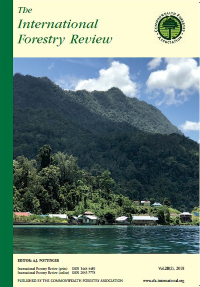An estimated 1.6 billion people depend in part or in full on forests and trees outside forests for their livelihoods. Yet, there are important inequities in the distribution of the benefits forests, trees, and agroforests yield to local people. Gender relations and norms, as fundamental organizing structures across cultures and societies, contribute to shaping the opportunities and constraints of women and men in these (agro)forests, and their ability to benefit from, and contribute to, positive development and environmental change processes. Drawing on data from Indonesia and Kyrgyzstan, this report focuses on how gender norms and agency shape innovation processes in forest, tree, and agroforestry landscapes. The capacity to creatively adapt and innovate to build resilience through natural resource-based livelihood practices is unevenly distributed amongst men, women and young people within communities, and may be constrained by shrinking opportunities in the context of wider structural economic and environmental changes. This aim of this report is to provide a better understanding of how men and women might be supported in exercising their agency in pursuing livelihood goals, independently or with others, in the context of rapidly transforming forest and tree-based landscapes.
The case studies reported here form part of ‘GENNOVATE: Enabling gender equality through agricultural and environmental innovation’; a qualitative comparative research initiative engaging 11 of the Phase I CGIAR Research Programs to examine the gender dimensions of innovations – new agricultural and natural resource management technologies, institutions, and practices. Despite significant historical, socio-political and environmental differences, the five case studies in East Kalimantan, Indonesia, and the case from southwest Kyrgyzstan exhibit pronounced and rapid changes in the relationship between people and forests. Both country contexts are marked by shifts in the relationship between rural and urban livelihood opportunities, forest livelihoods increasingly linked to migration and remittances, and commodification processes intensifying people’s integration into tree-based value chains. In the Indonesia cases, recent transformation is being driven by large scale commercial oil palm investment, which is bringing new wage work opportunities, whilst displacing other forms of livelihoods and resource access. In Kyrgyzstan, integration into the market economy and changing forest tenure regimes are resulting in new opportunities and challenges for different groups of forest dwellers.

